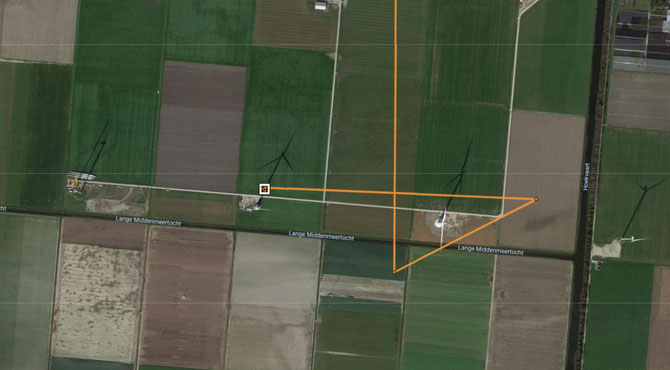
For the first time in Europe, a Bearded Vulture lost its life due to a collision with a wind turbine. This loss was even more significant because the individual in question, named Angèle, had hatched in captivity and had been released in France, as part of the reintroduction project there. He recently left home and started heading north, ending up in the Netherlands where he met his tragic end. With the growing population of the species in Europe and the growing development of wind farms, vultures and biodiversity are becoming more at risk every day. Following the high concern and interest in the story of Angèle, in this blog post, the Vulture Conservation Foundation (VCF) discusses Bearded Vulture conservation, the necropsy results and the threat of wind farm developments.
Discovery of Angèle after fatal collision with wind turbine

The LIFE GypConnect reintroduction project released the captive-bred vulture last year in the Baronnies. The project team has been closely tracking Angèle’s movements every step of the way thanks to the GPS tag on its back. When he recently wandered to northern Europe, as many young Bearded Vultures do in their second year, the monitoring efforts intensified as he visited unusual and unsuitable habitats. Hans Pohlmann, the VCF’s president who lives in the Netherlands, kept a close eye on the bird and contacted one of the wind farms where the bird roosted requesting to temporarily shut down the wind turbines. The next morning he flew through another wind farm, where, unfortunately, Angèle collided with a blade and died. Once alerted, Hans went on the scene and was deeply saddened when he found the carcass of Angèle under the wind turbine. After spending only one year in the wild, this magnificent vulture lost his life too soon, especially when considering that species can live between 20-30 years in the wild.
Necropsy results confirm the cause of death
After retrieving Angèle’s carcass, the next step was to perform a necropsy and send samples for toxicological and lead analysis, something the VCF always strives to conduct to confirm causes of vulture mortality, and, therefore, help inform targeted conservation actions. Wageningen Environmental Research and the Zoological Museum Netherlands performed the necropsy and confirmed the cause of death — Angèle died due to the impact of the blade on his chest, resulting in immediate death. The interior of the bird was completely shattered with a lot of broken bones and massive internal damage on his organs and muscles, which indicated that Angele was hit by a blade in an upwards movement. The X-ray also identified a shot pellet in the carcass of Angèle, and further examination is ongoing to help determine when and where it entered his body and how it affected the vulture. Furthermore, the veterinarians also took tissue samples to undertake toxicological analysis, as well as lead levels, another crucial step to determine whether other conditions may have affected Angèle. For example, if Bearded Vultures ingest food with lead ammunition, they may suffer from chronic lead intoxication.
Growing wind farm developments threaten biodiversity

Although renewable energy from wind farms is one of the solutions to reduce fossil fuel use, and thus the impacts of climate change, it can cause adverse impacts on biodiversity. When such developments are poorly planned, they can be deadly to vultures, birds and bats, especially if wind farms are constructed without proper environmental impact studies, and located either near breeding colonies, roosts or migratory pathways. In Spain alone, where approximately 90-95% of the entire European vulture population is present, nearly 10,000 vultures died due to wind turbine collisions according to data collected over the past 20 years. With certain bird populations like the Bearded Vulture growing, birds can disperse in unusual habitats, and it is critical to find solutions to mitigate such threats. Operators need to develop shut down on demand processes and be willing to cooperate with conservationists to avoid accidents and help save birds. Furthermore, wind farms should implement mitigation measures to help prevent collisions such as equipping deterrent devices and even painting a single wind turbine blade black as a recent study suggests, however, more research is necessary to determine the effectiveness of this anti-collision measure. To safeguard biodiversity, conservationist should work alongside the energy sector to find solutions and prevent such accidents.
The VCF and partners have been engaging with a number of researchers and also with energy operators to provide data about the occurrence of vulture species, to try to prevent the establishment of wind farms in important corridors or breeding areas. The organization is also involved in multiple projects funded by the EU’s LIFE Programme and MAVA Foundation that work to minimise the threat of collision to vultures.
If you want to support Bearded Vulture conservation efforts, please consider donating to the VCF.








